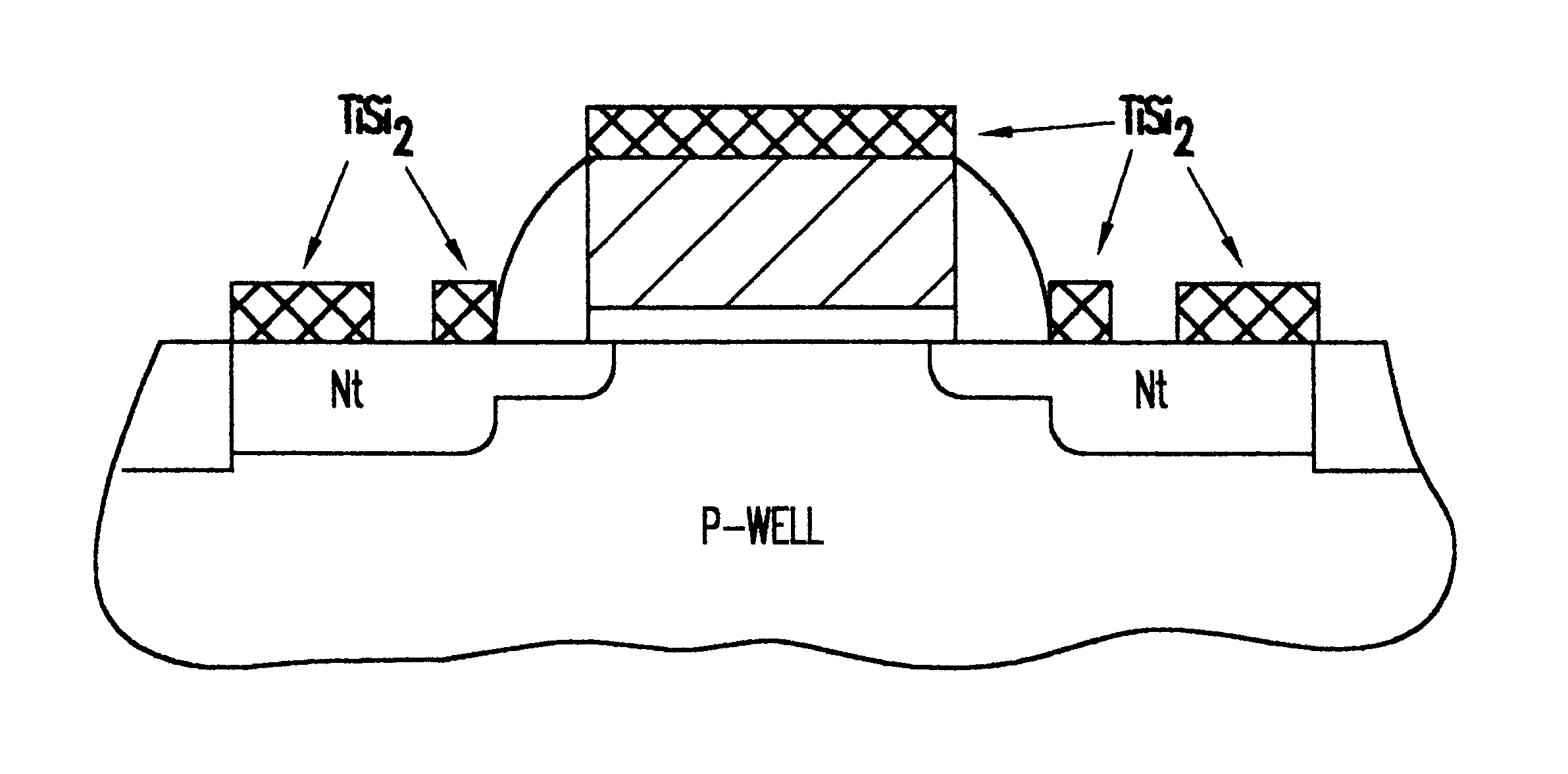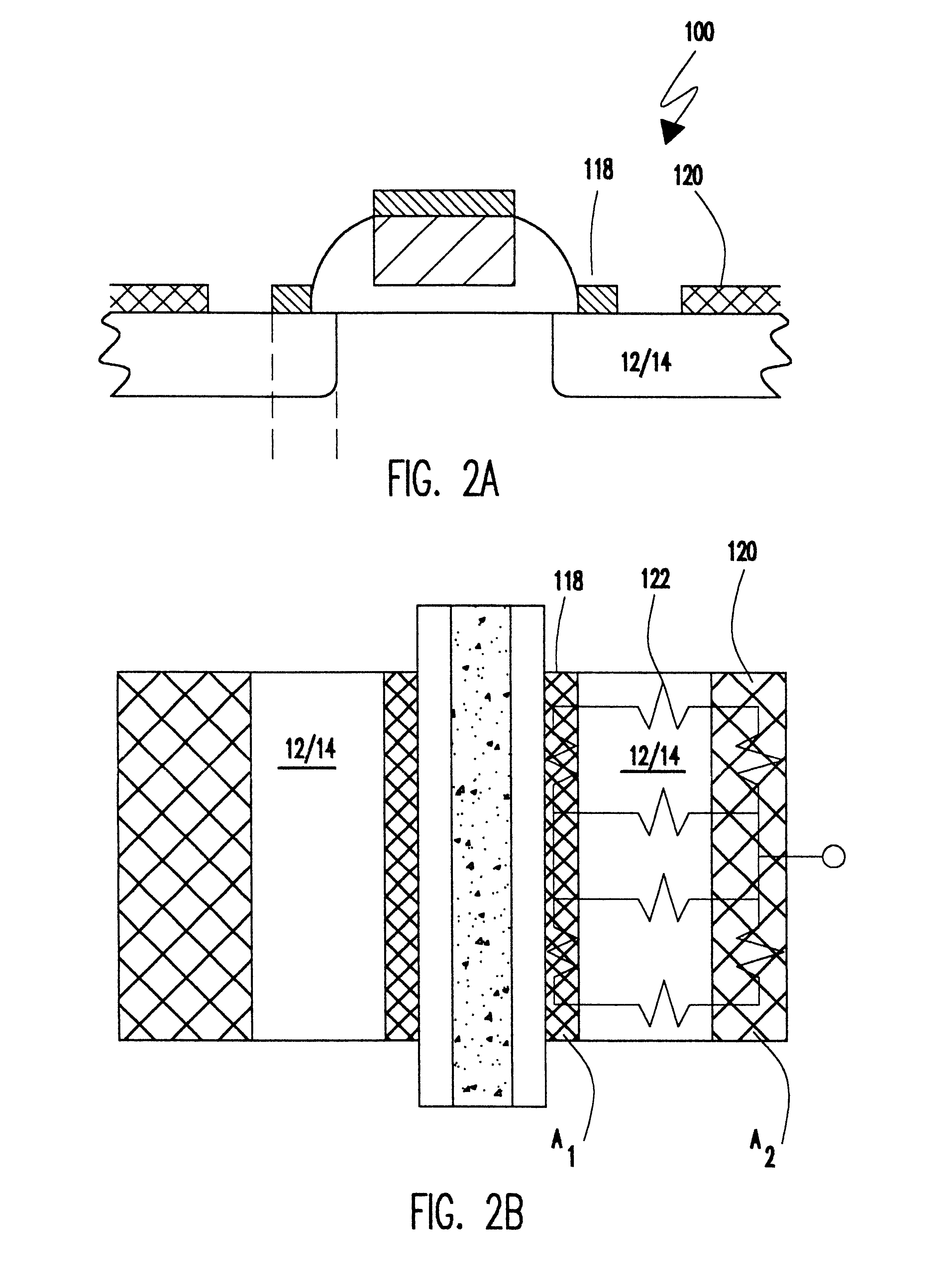Method of fabricating MOSFET with lateral resistor with ballasting
a technology of lateral resistor and ballasting, which is applied in the direction of resistors, semiconductor devices, electrical equipment, etc., can solve the problems of increasing resistive losses with attendant temperature increase, poor conductors of heat, and increasing curren
- Summary
- Abstract
- Description
- Claims
- Application Information
AI Technical Summary
Benefits of technology
Problems solved by technology
Method used
Image
Examples
Embodiment Construction
Referring now to the drawings, and more particularly to FIGS. 1A and 1B, there is shown in cross-section and plan view, respectively, a structure of a current FET design over which the present invention provides an improvement. It is to be understood that the invention may be considered to utilize some features of the design of FIGS. 1A and 1B but at a different size relative to minimum feature size as well as different materials having different electrical properties controllable in accordance with the present invention. Further, FIGS. 1A and 1B are arranged to facilitate conveyance of an understanding of the invention rather than to depict details of any particular known design. Therefore, FIGS. 1A and 1B are designated as being "Related Art" and no portion of either Figure is admitted to be Prior Art in regard to the present invention.
As shown in FIGS. 1A and 1B, a field effect transistor is formed partially within a substrate 10 by implantation of source and drain regions 12 in ...
PUM
 Login to View More
Login to View More Abstract
Description
Claims
Application Information
 Login to View More
Login to View More - R&D
- Intellectual Property
- Life Sciences
- Materials
- Tech Scout
- Unparalleled Data Quality
- Higher Quality Content
- 60% Fewer Hallucinations
Browse by: Latest US Patents, China's latest patents, Technical Efficacy Thesaurus, Application Domain, Technology Topic, Popular Technical Reports.
© 2025 PatSnap. All rights reserved.Legal|Privacy policy|Modern Slavery Act Transparency Statement|Sitemap|About US| Contact US: help@patsnap.com



